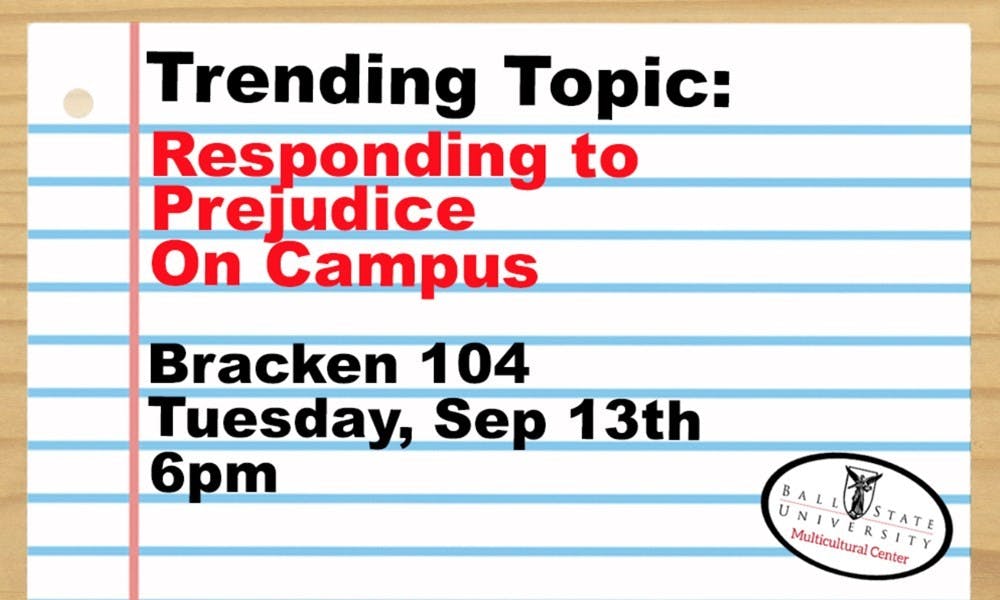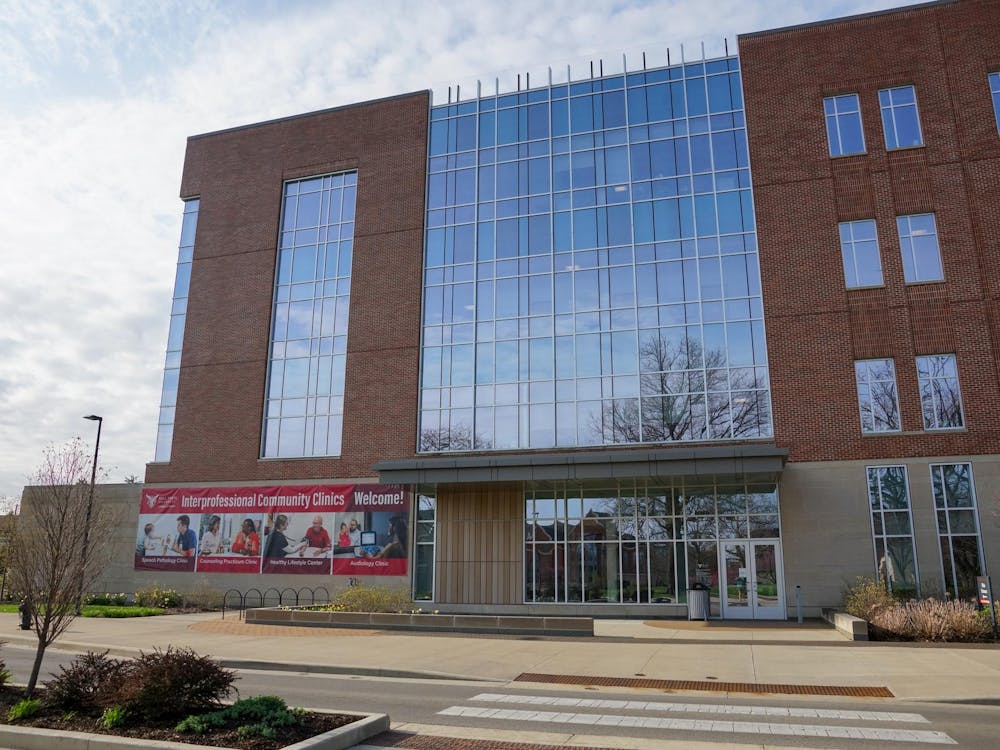The Multicultural Center held an open discussion on Sept. 13 about prejudice.
The discussion, held in Bracken, was part of the Trending Topic series the Multicultural Center holds each month.
This month’s meeting, which is set up as an open-floor style discussion with Ball State students and faculty, took place almost two weeks after a photo of a racist note found near campus surfaced on Twitter.
Stephen Morris, a
“This particular topic, Responding to Prejudice on Campus, was selected for discussion because of the increased conversation amongst students and student organizations about these issues,” Morris said in an email.
The talk began by defining terms related to prejudice, like racism, sexism,
The differences amongst racism, sexism,
While racism and sexism are defined as systematic, homophobia and transphobia are not. This raised questions about the visibility of the LGBT community in everyday life and whether or not members of that community are profiled in the same way people are racially profiled.
According to Ball State, prejudice is defined as “A set of negative personal beliefs about a social group that leads individuals to prejudge people from that group or that group in general, regardless of individual differences among members of that group.”
Prejudice is a contributing factor in a bias incident, which Ball State defines as “conduct, language or expression motivated by bias on a persons’ actual or perceived race, color, ability, ethnicity, gender, gender identity and expression, national origin, religion, sexual orientation, and veteran status,” and has no criminal involvement.
Later,
Students agreed they were not satisfied with Ball State’s response to the note found near campus.
One student said she was disappointed that neither students nor parents were notified about the note. The Student Government Association held their own open forum and created a diversity commission in response to the note.
“In my first several weeks here at Ball State, I’ve personally see a lot of passion around these issues,” Morris said. “There is a lot of desire for everyone in Ball State – from students of all races and cultures to faculty and administrators – to be on the same page, working toward the same goals.”
Some students also felt that faculty and administrators are not doing their parts to have the conversation about
Students also talked about what their hopes for the future are in regard to prejudice on campus and in their own lives. Many called upon the university to actively push for diversity because they felt that opportunities to have discussions like the open forum were important.
In regards to
“In addition to this past Trending Topic, the Multicultural Center will continue to take the topics of prejudice and race into account when creating our events and different initiatives,” Morris said.





